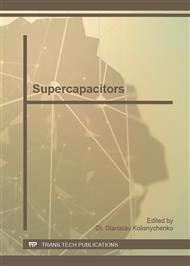p.388
p.392
p.398
p.402
p.407
p.418
p.422
p.427
p.431
Optimal Capacity Allocation for Supercapacitor Energy Storage System in Power Grid Primary Frequency Regulation
Abstract:
“Rapid response” features enable supercapacitor energy storage systems (SCESSs), used as auxiliary equipment for primary frequency regulation (PFR), to meet the stability and reliability requirements of power grids. In this application, capacity allocation for SCESSs is studied through theoretical derivation and simulation experiments. Firstly, the application scenarios of SCESSs in PFR are analyzed on the basis of weak grid frequency characteristics. Secondly, in two typical operating modes, namely virtual inertia control and droop control, an integrated operating mode is presented with consideration of the start-stop timing and the output depth of SCESSs, and the relationship between the operating modes and rated powers is derived. Then, to satisfy simulation needs of PFR, an analysis model for SCESSs is built, and a common process of SCESS capacity allocation is summarized. Finally, the optimal rated power, virtual inertia coefficient and droop coefficient of an SCESS is calculated with reference events and frequency control requirements of a weak grid as the benchmark. The results show that aforementioned theory is correct and reasonable, and that the proposed method can achieve optimal frequency regulation effects with a small capacity.
Info:
Periodical:
Pages:
407-417
Citation:
Online since:
December 2014
Authors:
Price:
Сopyright:
© 2015 Trans Tech Publications Ltd. All Rights Reserved
Share:
Citation:



